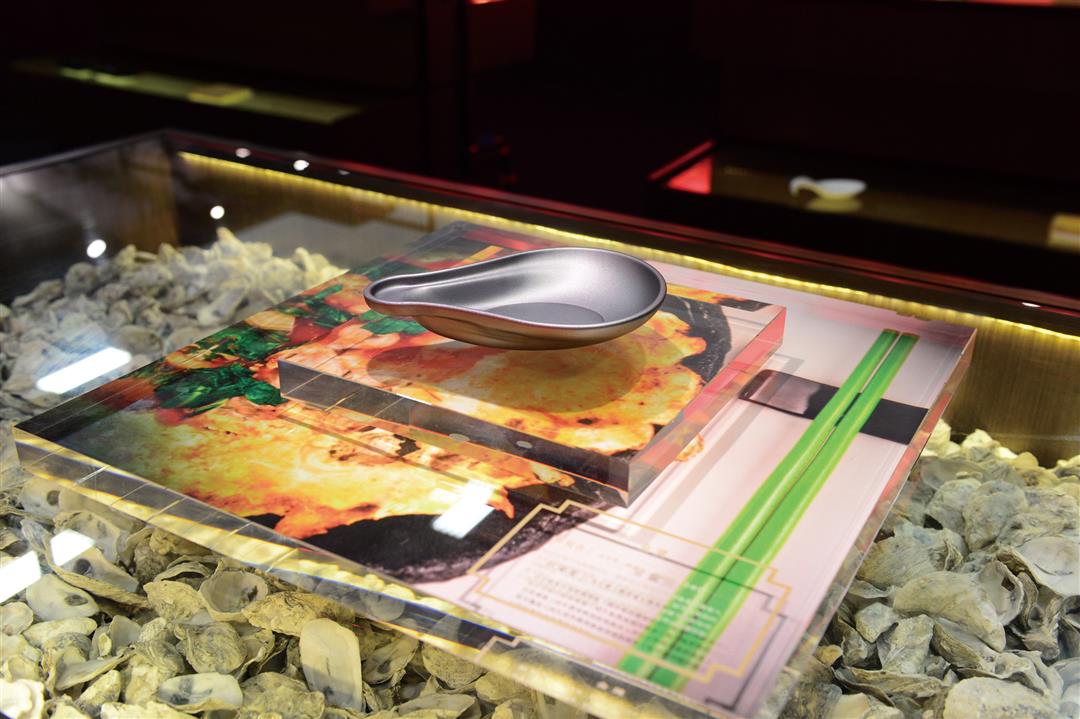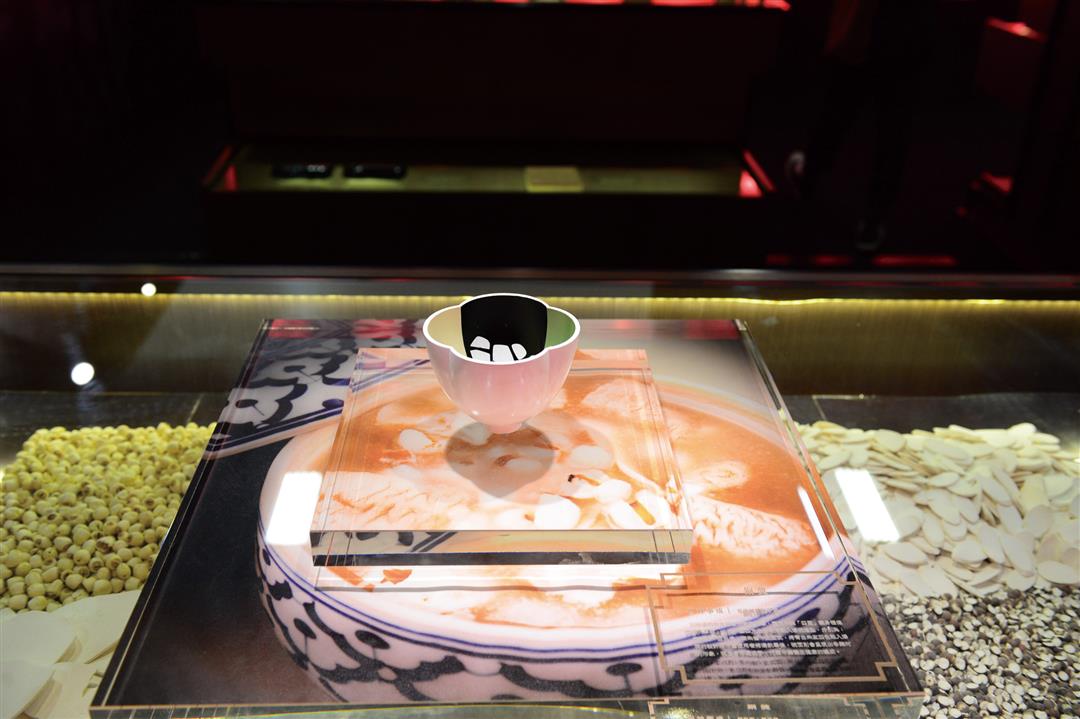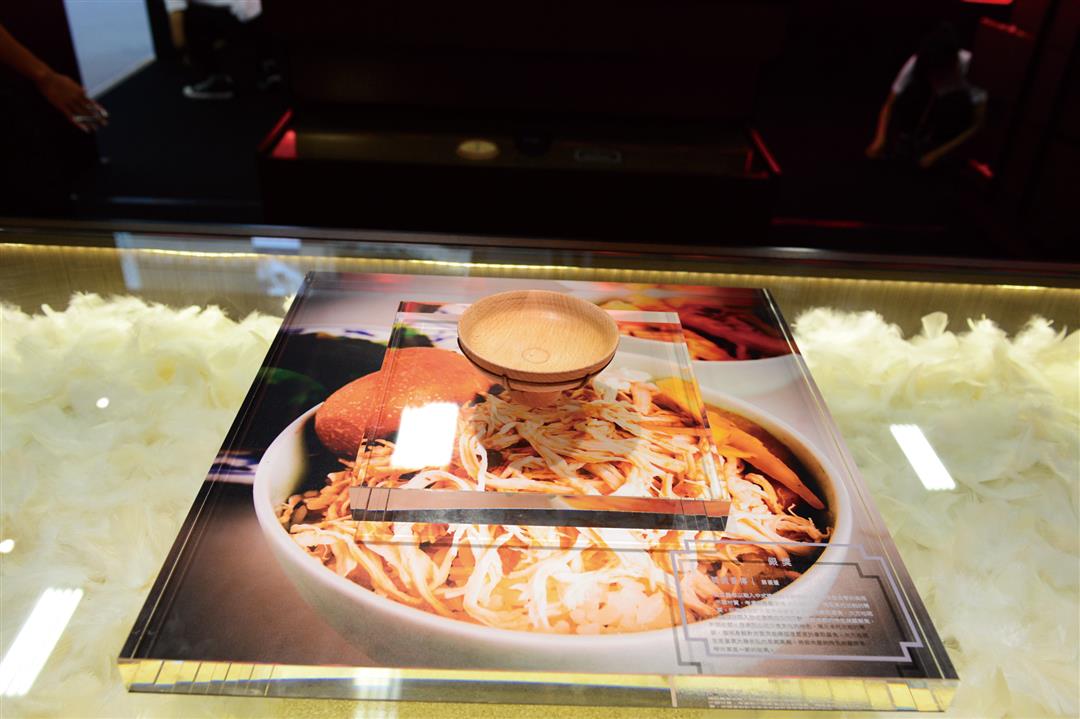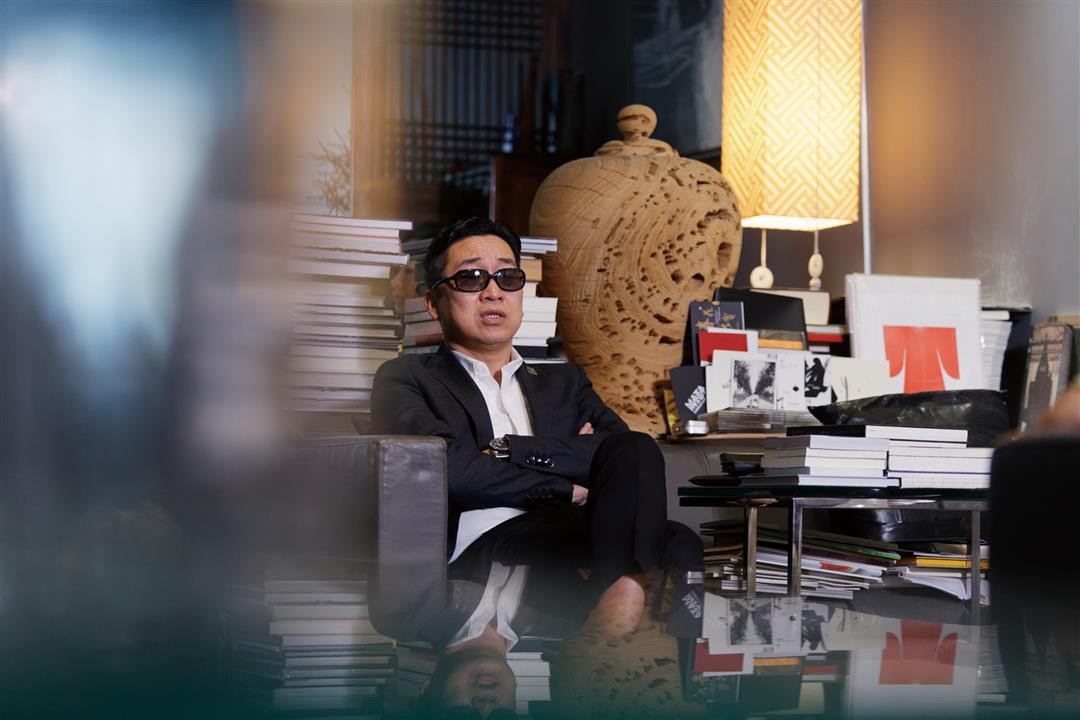Gorgeous when served
The winner of this year’s gold medal was a plate for oyster omelets designed by Zhu Fangying, Liu Jingwen, Han Jingyi, and Qiu Jingwen, all of whom are students in the Department of Creative Design and Management at National Taichung University of Education. Liu explains that they went for a plate shaped like an oyster shell so that customers would feel as if they were holding a large oyster shell in their hands, making the consumption of the omelet a more immersive experience by providing a visual as well as a culinary feast. To allow stall owners to serve customers without burning themselves, the plate includes a dome-like bulge at its foot and a handle-like extension on one side. All in all, the design represents an outstanding combination of practicality, safety and visual appeal.
The silver medal went to a bowl for serving chicken rice. Designed by Su Yuanyuan, a graduate student in industrial design at National Cheng Kung University, the bowl’s shape was inspired by the dougong, an interlocking bracket atop an architectural column. The bowl’s curves make it easy to hold while eating, and its large diameter at the top focuses attention on the chicken rice inside. Su gave it even greater appeal by making it from wood.
The bronze medal winner was a bowl for four-gods soup designed by Gao Genglin and Luo Zixiu, students in the Department of Industrial Design at Shih Chien University. When accepting the award, Gao stated that foreign tourists rarely try four-gods soup because its washed-out colors make it look unappetizing, and argued that most of the bowls used to serve it do little to heighten its appeal. The duo therefore designed their bowl to contrast strongly with the food it contains. “We drew our design elements from an old story involving the Emperor Qianlong that describes the four creatures Chinese associate with the cardinal directions: the green dragon of the east, the white tiger of the west, the vermilion bird of the south, and the black tortoise of the north. Inspired by the story, we chose to incorporate green, white, red and black into our utensil’s design.” Interestingly, when the soup is finished, the bowl’s inner surface displays abstract representations of each of the herbal medicines the soup contains while its bottom shows the character cheng (“finished”), suggesting that the four herbs have completed their mission of imparting health to the customer.
Curator Chen Jun-liang was much impressed by a bubble-tea glass inspired by a paper umbrella of the kind that Kaohsiung’s Meinong District is famous for. The glass itself resembles the canopy of a paper umbrella, the straw its handle, and the black “pearls” in the bubble tea spots on the canopy. The design also includes coasters made with a printed fabric from Meinong that recalls the decorative patterning at the peak of such umbrellas. By combining bubble tea with Meinong umbrellas, the design fully incorporates a creative concept into a professional-level product in a way that promotes local tourism.
By applying their creativity to traditional working-class snacks, Taiwanese young people have developed clever, meticulously designed utensils that add visual allure to the culinary experience of Taiwanese “small eats,” enhancing both the cultural connotations and the life aesthetics of the snacks.

This year’s gold medal went to a plate for oyster omelets, designed by Zhu Fangying, Liu Jingwen, Han Jingyi, and Qiu Jingwen, all students in the Department of Creative Design and Management at National Taichung University of Education. The plate combines practicality, safety and visual appeal. (courtesy of Liu Jingwen)

The bronze-medal winner was a bowl for four-gods soup designed by Gao Genglin and Luo Zixiu, students in the Department of Industrial Design at Shih Chien University. Inspired by a story involving the Emperor Qianlong, the design incorporates strong visual contrasts and clever implications. (courtesy of Gao Genglin)

The silver medal went to a bowl for serving chicken rice designed by Su Yuanyuan, a graduate student in industrial design at National Cheng Kung University. The wide-mouthed bowl imparts a new look to the traditional snack.

Leading designer Chen Jun-liang curated the competition and hopes that its incorporation of creative design work into everyday lives will heighten the appeal of traditional snacks. (photo by Lin Min-hsuan)